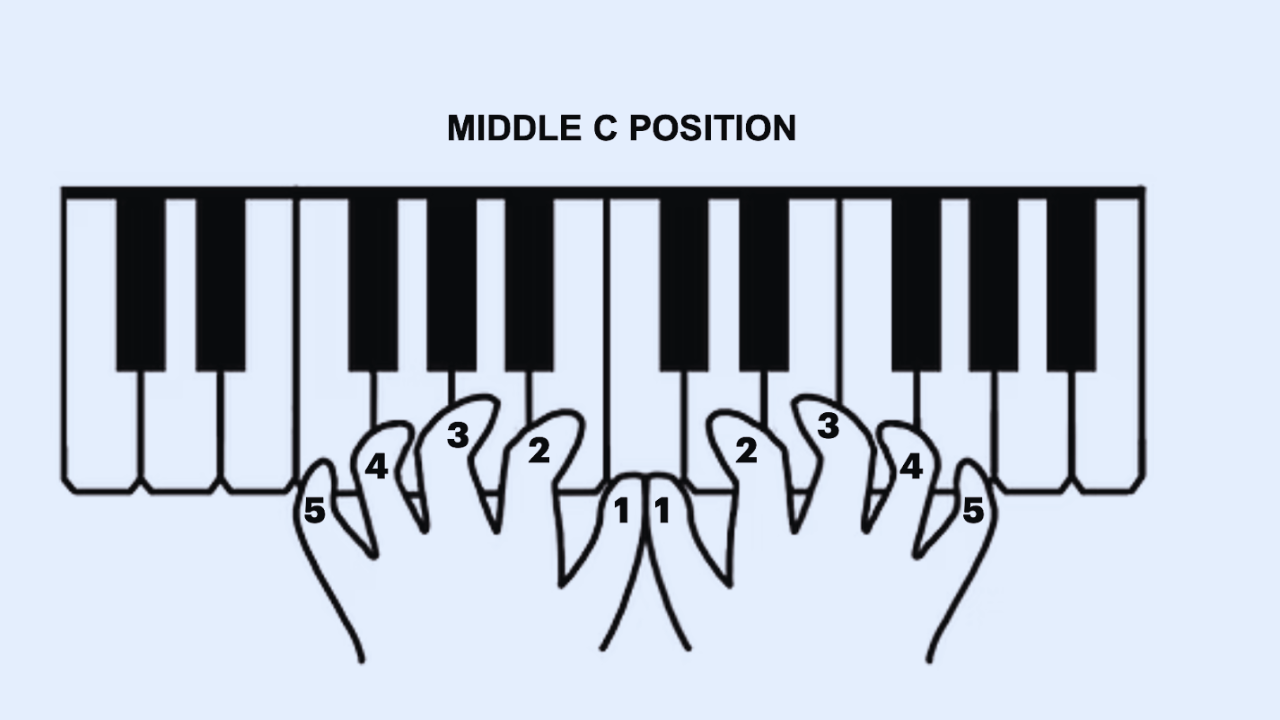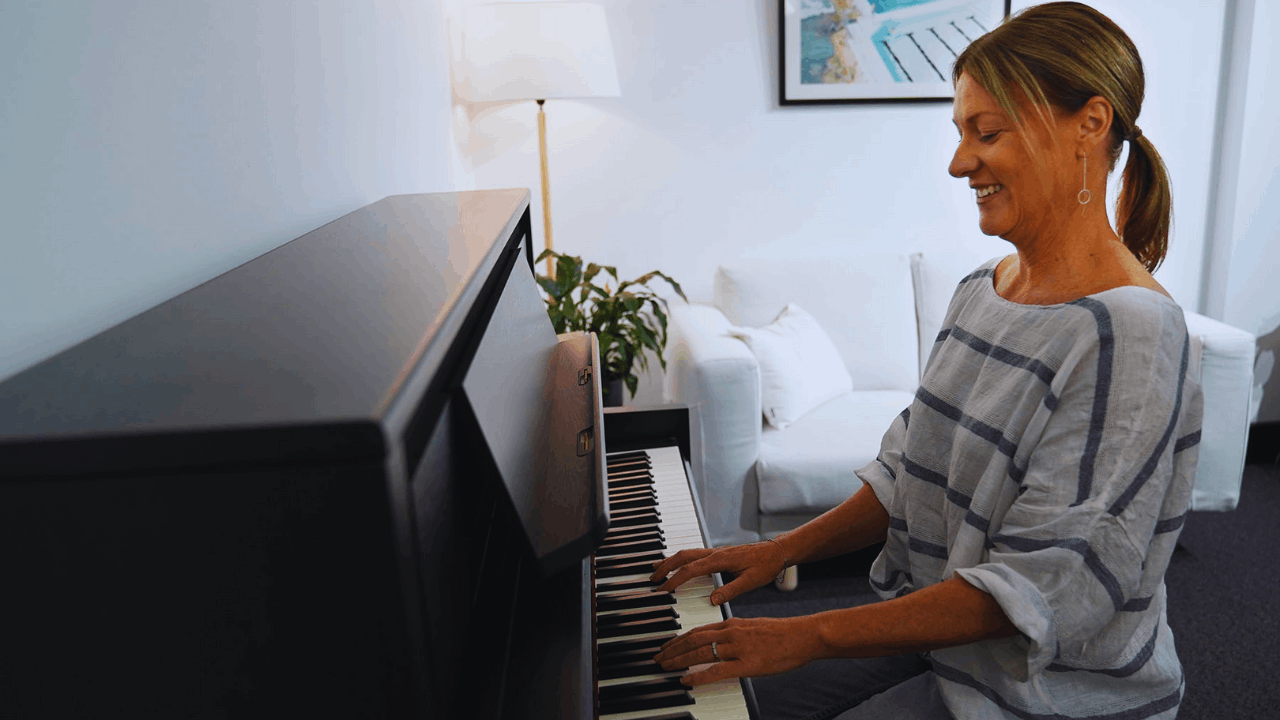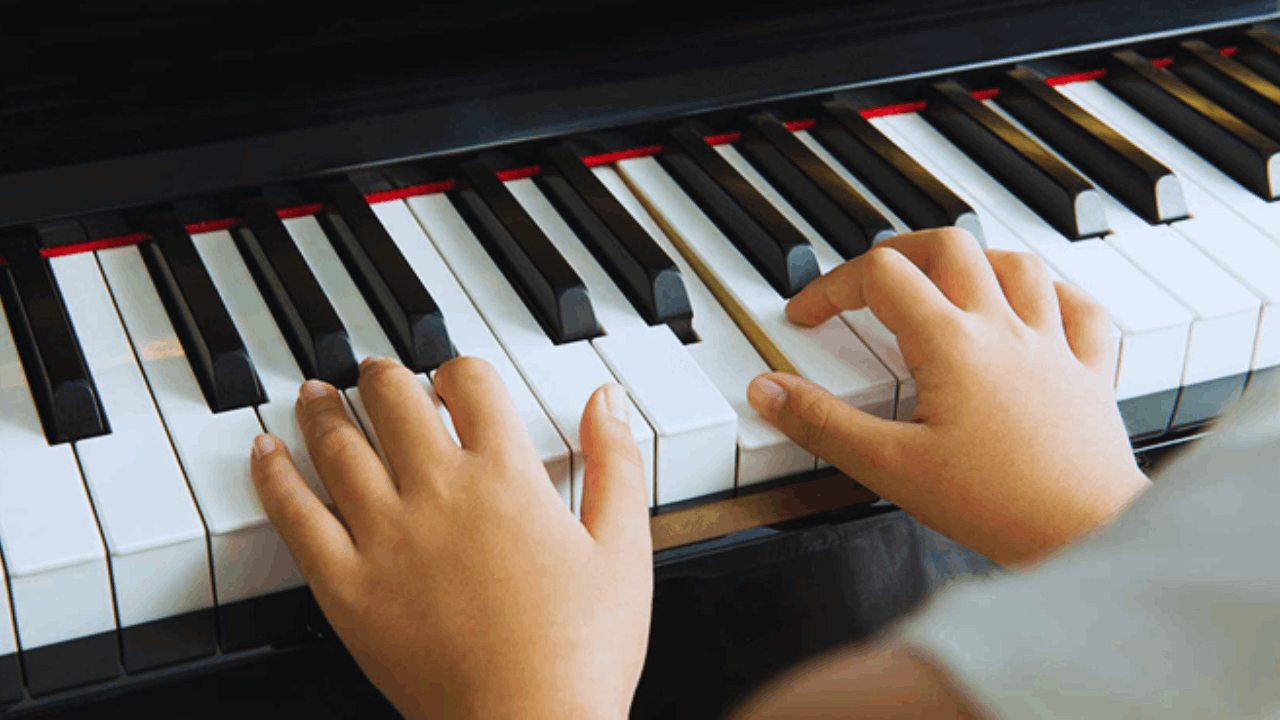Learning music is more accessible than ever, and the piano is a great place to start. In this guide, you will learn practical steps and clear options to begin without confusion.
You will also see what to consider before choosing a platform or teacher. The introduction includes the phrase how to play the piano online so search engines and readers understand your goal from the start.
Why You Should Learn Piano Online
You can learn from home with a schedule that fits your life. Online lessons remove travel time and give you access to high quality teachers and courses from anywhere.

You also get recordings and structured materials you can review as often as you need. This flexibility helps you build a consistent habit.
Flexible Pace and Personalized Learning
Self-paced programs let you repeat tricky sections and move faster when concepts are easy. Many platforms include progress tracking, practice reminders, and quizzes that adapt to your level.
You can pause lessons to practice a passage, then resume without losing context. This control makes your time efficient and focused.

Cost Efficiency and Wider Choice
Online options often cost less than in-person lessons while offering a bigger library of courses. Subscription plans can unlock hundreds of lessons for the price of a single private session.
You can try free trials to test teaching style and content before paying. This helps you invest with confidence.
Motivation Through Community and Feedback
Modern platforms offer communities, challenges, and practice streaks that keep you motivated. Some include teacher feedback through video submissions and annotated comments.
You can join live workshops to ask questions and learn with others. These features make learning structured and accountable.
What to Consider When Learning Piano Online
Before you start, check your equipment, space, and internet connection. You should also assess your goals and preferred learning style.

Decide whether you want a full curriculum or targeted lessons on songs and technique. Clarifying these points will help you choose the right path and avoid frustration.
Instrument and Practice Setup
Use a digital piano or keyboard with full-size keys and touch sensitivity for realistic control. An 88-key instrument is ideal, but 61 or 76 keys can work while you begin.
A sturdy stand, bench, and proper height help with posture and comfort. Good headphones allow focused practice without disturbing others.
Platform, Curriculum, and Teacher Quality
Look for structured pathways that cover reading, rhythm, technique, and ear training. A clear syllabus should sequence skills logically and include achievable checkpoints.
Teacher credentials, lesson clarity, and musical examples matter for long-term progress. Choose a course that balances songs you like with solid fundamentals.
Feedback, Assessment, and Accountability
Consistent feedback prevents bad habits and speeds improvement. Some platforms offer AI-assisted note detection or teacher review of video submissions.
Practice logs, weekly goals, and simple performance tests keep you on track. A plan for regular assessment gives you measurable progress.
Where to Learn Piano Online
You have three main choices for learning sources. Structured platforms guide you through graded courses with integrated tools.

Live online lessons connect you with a private teacher for personalized coaching. Free resources support your practice with theory, technique tips, and song tutorials.
Structured Learning Platforms
Course-based sites provide step-by-step lessons, interactive exercises, and built-in metronomes. Many include ear training drills, sight-reading practice, and song libraries organized by level.
Progress dashboards help you see what to repeat and what to learn next. This format suits learners who want a complete program.
Live Teachers and Virtual Studios
Live video lessons give you real-time corrections on posture, fingering, and sound. You and your teacher can share sheet music, mark fingerings, and set custom assignments.
Scheduling flexibility allows weekly sessions or intensive short-term plans. This option is ideal if you want tailored feedback and faster course corrections.
Free Resources and Learning Tools
You can supplement lessons with free sheet music, theory explainers, and technique videos. Slow-down tools and loop functions help you isolate difficult bars and build speed safely.
Backing tracks and play-along recordings train timing and confidence. Combine these resources with a structured plan for best results.
How to Play the Piano Online
The process is simple and repeatable. Set clear goals, choose a learning path, and organize your practice.

Master fundamental technique while learning music you enjoy. Track progress and perform small milestones to stay motivated.
Set Goals and Build a Plan
Decide whether your priority is reading music, playing by ear, or both. Choose two or three songs that match your level and reinforce core skills.
Create a weekly schedule that you can realistically follow. Keep your plan visible and adjust it based on your progress.
Learn the Fundamentals Systematically
Start with posture, hand position, and relaxed movement to avoid tension. Practice five-finger patterns, scales, and simple chords to develop coordination.
Learn rhythm values, time signatures, and counting out loud to lock in timing. Add basic music reading so you can learn new pieces efficiently.
Practice With Focus and Good Technique
Use a metronome to build steady tempo from slow to performance speed. Break music into small sections, loop them, and join them only after each is clean.
Practice hands separately, then together, while keeping movements loose and efficient. End each session by playing something musical to keep motivation high.
Train Your Ears and Musicality
Sing or hum the melody before playing to internalize pitch and phrasing. Clap rhythms to strengthen timing away from the keyboard.
Use call-and-response exercises to connect what you hear with what you play. Record short clips to evaluate tone, balance, and dynamics.
Use Technology to Enhance Learning
Interactive notation can follow your playing and highlight mistakes for targeted fixes. Video slowdown lets you analyze fingerings and articulation from advanced demonstrations.
Annotation tools help you mark difficult spots and finger choices directly on scores. Cloud storage keeps your materials synced across devices for seamless practice.
Measure Progress and Perform Regularly
Set monthly goals like finishing a piece, passing a level test, or improving speed. Keep short performance videos to track your growth and identify patterns.
Share recordings with a teacher or community for constructive feedback. Simple performances build confidence and make practice purposeful.
Common Challenges and How to Solve Them
Many learners struggle with consistency, reading, and hand coordination at the start. Others feel overwhelmed by the number of online options and resources.

You can solve these issues with a simple routine and clear checkpoints. Use the steps below to remove friction and keep moving.
Build a Sustainable Routine
Aim for five short sessions per week instead of a single long session. Keep a fixed start time so practice becomes automatic and easier to protect.
Begin with a two-minute warm-up to switch your brain into focused mode. End with a favorite piece to reinforce enjoyment.
Strengthen Reading and Coordination
Practice simple sight-reading daily with very easy material to build flow. Alternate hands-separate and hands-together work to reduce coordination load.
Use rhythmic counting and a slow tempo to protect accuracy and relaxation. Gradually raise speed only after notes feel secure.
Avoid Plateaus With Smart Repertoire
Choose pieces that target one main skill at a time to reduce confusion. Rotate between technique drills, a study piece, and a fun piece each week.
Replace any exercise that causes tension with an easier one that builds the same skill. Review old pieces briefly to maintain fluency.
Equipment and Setup Tips for Better Results
Good setup improves comfort, sound, and focus during online learning. You do not need expensive gear to begin, but a few choices matter.

Start with a dependable instrument, reliable internet, and a quiet practice space. Small upgrades can deliver clear benefits.
Choose the Right Keyboard or Piano
A digital piano with weighted keys gives a closer feel to an acoustic instrument. Touch sensitivity lets you control volume and tone with finger pressure.
Built-in metronome and headphone output are valuable for practice and lessons. If possible, pick a model with pedal input to learn damper pedal technique.
Optimize Your Learning Environment
Set the bench height so your forearms are parallel to the floor while playing. Place your device where the teacher can see your hands and wrists clearly.
Good lighting reduces eye strain and helps with score reading. Keep your scores, pencil, and notebook within reach to streamline practice.
Keep Your Tech Reliable
Use a stable internet connection to avoid interruptions during live sessions. Headphones with a closed back reduce external noise and improve clarity.
A simple external microphone can make your sound clearer to teachers. Update apps and software regularly for the best performance and features.
Conclusion
You now know how to play the piano online with a plan that is simple and effective. Choose a platform or teacher that fits your goals, then practice with focus and steady pacing.
Keep fundamentals, repertoire, and feedback in balance so progress stays visible. Begin today with a short session and build momentum toward confident playing.